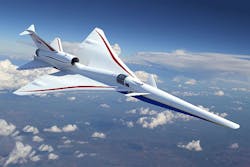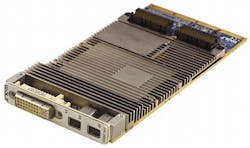WOLF video graphics embedded computing modules help design windowless supersonic aircraft cockpit
WHITCHURCH-STOUFFVILLE, Ontario –Supersonic aircraft designers at the U.S. National Aeronautics and Space Administration (NASA) needed rugged video graphics embedded computing modules to help develop the NASA X-59 Quiet SuperSonic Technology (QueSST) aircraft. They found their solution from WOLF Advanced Technology in Whitchurch-Stouffville, Ontario.
Researchers at the NASA Armstrong Research Center at Edwards Air Force Base, Calif., have chosen two WOLF video graphics modules to provide video capture, processing, encoding, and display capabilities to help enable NASA's windowless cockpit display system. The X-59 is designed to reduce sonic boom noise.
NASA experts are using the WOLF XMC-E9171-VO (WOLF-3196) and the XMC-FGX2-SDI-8IO (WOLF-3180), video graphics modules in the QueSST initiative to replace a front windshield with video display technology.
The XMC-E9171-VO features an AMD Radeon graphics processing unit (GPU), a chip-down rugged design that meets the MIL-810 specification, can handle as many as five 4K displays using Display Port 1.4, and supports high dynamic range video with 10-bit color depth.
"The X-59 QueSST aircraft will represent a step forward in supersonic aircraft flight, and the products we've chosen from WOLF will help us deliver the visual data our pilots require to meet our mission criteria," says Trey Arthur, aerospace engineer at NASA.
For more information contact WOLF Advanced Technology online at https://wolfadvancedtechnology.com, or the NASA Armstrong Research Center at www.nasa.gov/centers/armstrong.
Ready to make a purchase? Search the Military & Aerospace Electronics Buyer's Guide for companies, new products, press releases, and videos

